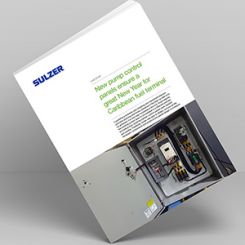Q. How has the Industrial Internet of Things (IIoT) impacted the pump industry? A. The pump industry has seen a growing trend to implement new technologies, based on the Industrial Internet of Things (IIoT) trend. They provide the original equipment manufacturers (OEMs) the opportunity to offer more to the purchasers and users. The Hydraulic Institute recently addressed wireless data transmission technology innovations in the latest revision of the ANSI/HI 9.6.5 Rotodynamic Pumps for Condition Monitoring standard. Condition-based maintenance (CBM) is the monitoring of the output of various sensors and/or indicators. Machinery condition may be assessed by monitoring many indications, but vibration analysis has taken the forefront of implementing wireless data transmission. The level and pattern of vibration can indicate the health and condition of rotating components. For specific markets, such as industrial sensors, wireless technology is evolving rapidly while standards are significantly lagging. Proprietary wireless protocols that are specific to CBM sensors are expected to fulfill an important role in enabling wireless online monitoring at a comparable level to a wired solution. The development of IIoT is expected to increase operational efficiency by up to 45 percent and provide a fairly quick return on investment (ROI) for manufacturers as a result of readily available diagnostic data capabilities. Q. How can you implement the IIoT to monitor vibration in a pumping system? A.Wireless vibration transmitters provide early indication of potential problems. Various problems in pumps can be detected using vibration monitoring, including bearing problems, imbalance or misalignment of rotating elements, gear tooth damage, loose connections of pump and motor components, and drive belt and coupling problems. Vibration monitoring sensors are mounted on the bearing housing to detect these changes in vibration. These sensors can be mounted permanently and monitored continuously or mounted temporarily as part of a route-based periodic monitoring system. Data can be collected in multiple locations and directions (horizontally, vertically and axially) on the equipment. Vibration data is recorded and can be analyzed remotely or by program to identify faults. There are several topologies for connecting a wireless sensor to a receiving station for data processing. Figure 9.6.5.16.1 shows the star topology network. The star topology is a network that consists of one central node, typically a switch or hub, which acts as a conduit to transmit messages.
 Figure 9.6.5.16.1. Example of a vibration diagnostic system network (star topology) (Courtesy of Hydraulic Institute)
Figure 9.6.5.16.1. Example of a vibration diagnostic system network (star topology) (Courtesy of Hydraulic Institute)
